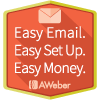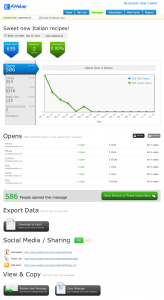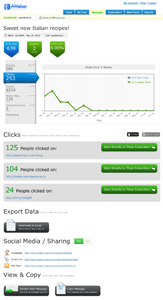Views: 1
GetResponse is a complete email marketing solution. It provides:
- Turnkey newsletter publishing and hosting features
- Unlimited follow-up auto responders to deliver information to your subscribers and convert them to paying customers
- Fully automated list hygiene
- Anti-spam practices
- Established relationships with major Internet Service Providers and Email Service Providers
- The highest email deliverability to ensure that your messages get through to your prospective customers
- Undisrupted email deliverability for their customers
- Over 5 billion messages each year from 172 countries
- Full scalability and is capable of handling both small and very large lists alike (1+ million subscribers)
GetResponse in highlights:
- Over 100,000 active accounts
- Free version available
- Deliverability of up to 68% higher than our competitors
- Unlimited auto responders, follow-ups, campaigns, lists and messages
- Powerful automatic message personalisation
- Smart tracking features
It also brings a lot of benefits including:
- Catches lots of sales and jolts your leads into profitable action
- Boosts your lead generation and business-building results
- Chops away tedious and repetitious email marketing tasks
When you join GetResponse, you will be supported every step of the way on your path to successful email marketing by their excellent customer support and materials with context help, user guides, FAQs and video tutorials. You will benefit from industry-leading email deliverability which they consistently maintain through their solid relationships with ISPs, their proactive delivery initiatives and their strong anti-spam commitment.
Become a GetResponse customer today and find out how you can instantly get tangible, measureable results with out wasting your time or money.



